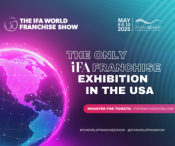On March 25, 2013, the US Supreme Court heard arguments in Federal Trade Commission v. Actavis, a case that could have a huge impact on the health care industry and the intersection of antitrust and intellectual property law. At issue is the appropriate standard to judge so-called "reverse payments" made by branded pharmaceutical companies to generic drug applicants to settle patent disputes and, potentially, delay the introduction of generic drugs.
Congress passed the 1984 Hatch-Waxman Act to speed the introduction of generic drugs to the market. That Act, along with subsequent amendments, allows generic drug manufacturers to rely on much of the work of the brand name drug manufacturer to develop generic drugs and seek Food and Drug Administration approval. To receive final FDA approval and market the drug, however, the generic drug manufacturer must show either that its drug does not infringe the branded manufacturer's patent or that the patent should be declared invalid. Such patent litigation holds high stakes for both parties and, as with many other examples of high-stakes litigation, often is settled before final judgment. Many of the settlements in these cases have the same two elements present in the instant case: the generic manufacturer agrees to delay introduction of its product to a date later than if the patent were ruled invalid but earlier than if the patent were held not invalid; and the brand name manufacturer agrees to pay the generic manufacturer, usually both for compensation for the delay in generic introduction and the provision of some ancillary services.
The result, according to the FTC and many private parties, violates the antitrust laws and is the exact opposite of the intent of Hatch-Waxman — a delay in the introduction of low-cost generic drugs. Therefore, the FTC and several private parties have filed numerous lawsuits for more than a decade claiming that these settlement payments are anti-competitive, similar to any other payment to a competitor not to enter a market. The drug manufacturers and alleged infringers, on the other hand, defend the settlements as allowing introduction of generic drugs before the end of a patent and otherwise consistent with antitrust and patent laws and Hatch-Waxman. Until recently, several Circuit Courts of Appeals, including the Eleventh Circuit in the instant case, agreed with the drug manufacturers and allowed such settlements. In July 2012, however, the Third Circuit in In re K-Dur Antitrust Litigation agreed with private plaintiffs and invalidated such a settlement. The Supreme Court, with the help of nearly thirty amici briefs, now will resolve this policy debate and split in the circuits.
The courts supporting these settlements have adopted a "scope of the patent" test. Under that test, such agreements, even involving payments, are a lawful exercise of the branded manufacturer's patent law right to exclude so long as the generic drug is allowed to enter prior to the patent's expiration. The FTC and others have complained that such a test subverts Congress' desire for quicker generic drug marketing and allows agreements akin to a division of markets by competitors. The FTC instead proposes a test that would find such agreements to delay generic introduction accompanied by a payment to be presumptively unlawful. The presumption could be rebutted through a "quick look" analysis focused on just a few factors, especially whether the payments were for some legitimate ancillary services.
The parties made these competing arguments to eight justices on March 25 (Justice Alito was recused). The justices were fully engaged and showed skepticism of the arguments of both sides. Some of the justices seemed to search for a middle ground. The government's attorney made clear that only the presence of the payment that delayed introduction of the generic should be presumed anti-competitive. But Justice Sotomayor asked why a special standard was necessary for this specific situation: "But why is the rule of reason so bad?" Justice Breyer also was worried about creating a special standard, something he feared might become an "administrative monster." On the other hand, those same two justices, plus Justice Kagan, also pushed back on the arguments by the attorney for the drug companies. Justice Kagan saw the "scope of the patent" test as an incentive for the companies to "split monopoly profits in this way to the detriment of all consumers." Justice Breyer tried to articulate a more limited and structured rule of reason analysis — something less than "the kitchen sink" of a full rule of reason test and complete analysis of the validity of the branded manufacturer's patent.
The Court appeared to appreciate the difficult issues on both sides. They struggled, often with conflicting statements from the attorneys, to understand the facts regarding these settlements under Hatch-Waxman and whether they could fashion a test that would not have unintended consequences in other areas of antitrust and intellectual property law. An opinion is expected this June. Even then, this issue will not be resolved worldwide — the European Commission issued Statements of Objections in July 2012 in two similar cases based on an analysis similar to the FTC's.


 />i
/>i

